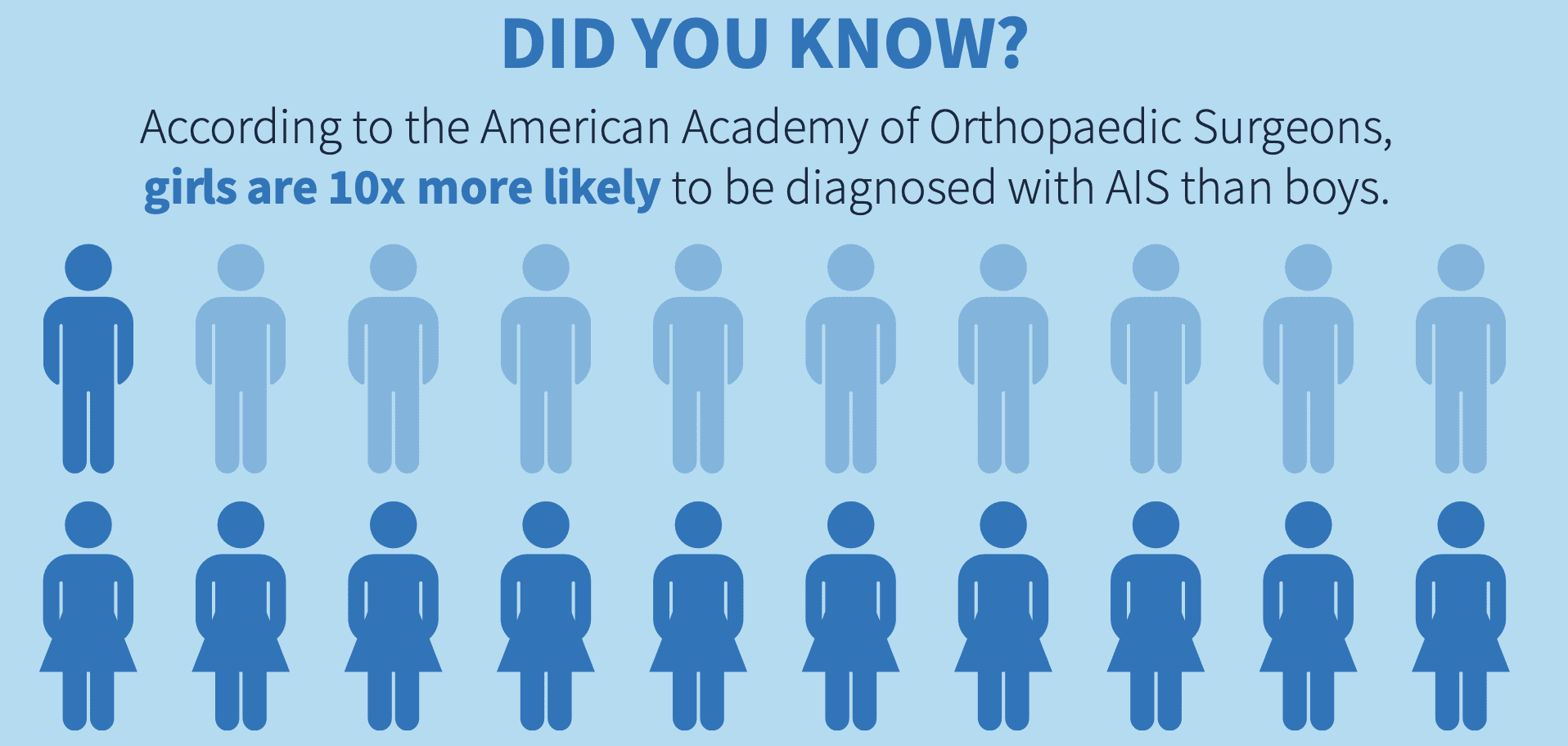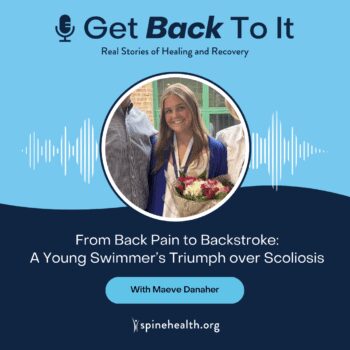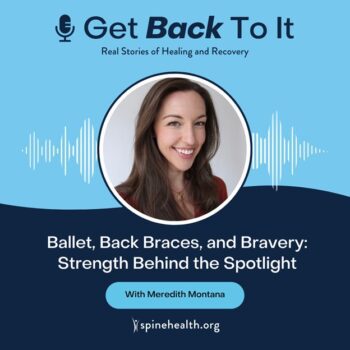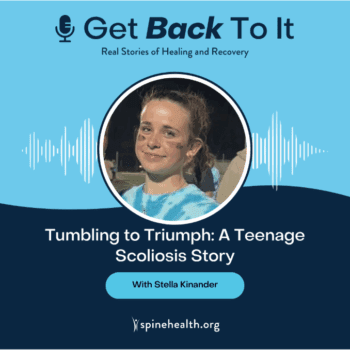If you have kids, learning about and being attentive to the signs of Scoliosis is a good idea. Many of the doctors we work with at NSHF are specialists in this field. In this most recent episode of Spine Health Journal, Dr. Serena Hu writes about this.
WHAT IS ADOLESCENT IDIOPATHIC SCOLIOSIS (AIS)?
AIS is the most common type of scoliosis in otherwise normal teenagers. ‘Adolescent’ refers to the time in life when scoliosis develops, in this case it develops during adolescence (age 10 to adulthood). ‘Idiopathic’ means unknown cause. Although there are several theories on what causes scoliosis, we don’t really know all of the factors involved in the development of AIS. Finally, ‘scoliosis’ refers to a sideways curvature (to the left, right, or both) of the spine that should otherwise be straight up and down.
>>>>> Summer with Scoliosis: 7 Tips for Brace-Wearing Teens
While the spine curve (tilting) is what we measure in degrees on X-rays, what is more obvious to the eye is that the spine and ribcage also rotate (twisting) as the spine curves. This visible rotation is the reason the examination involves bending forward, revealing the asymmetrical appearance of the trunk of the body causing one side to look higher than the other side. We also look to see if the waist looks asymmetric, or for one shoulder to be higher than the other. While no one is completely even on one side compared to the other, scoliosis can cause different amounts of asymmetry.
HOW COMMON IS AIS AND IS IT MORE COMMON FOR BOYS OR GIRLS?
AIS is seen in 1-3% of adolescents but is usually mild for most individuals. It is much more common in girls than boys.
WHAT ARE THE TREATMENT OPTIONS FOR AIS?
Observation: Many teens with AIS have milder degrees of scoliosis which can be observed and followed with periodic X-rays. AIS has the greatest risk of getting worse (progression of curve size) while the person is still growing. The amount of time that growth is expected to occur for each individual is typically the duration of time AIS is observed on a regular basis.
>>>>>> Joseph’s Bright Future: Scoliosis Surgery Success
Bracing: Bracing has been shown to slow or stop the progression of scoliosis if worn appropriately during the growth period. If someone’s curve has shown progression while being observed by periodic X-rays AND there is expected continued growth of the spine, then often the balance tilts towards bracing. Bracing is generally the first option for a person whose potential for worsening (based on how large the curve measures at the time of diagnosis and how much growth is remaining) is significant.
Surgery: If bracing doesn’t slow or stop the progression of the curve, or if scoliosis isn’t diagnosed until it is more significant, surgery may be recommended to correct the scoliosis and prevent further progression. Surgery usually consists of curve correction and spinal fusion with rods, screws, and bone graft to lock the curve into a better position that can no longer change over time.

DOES BRACING WORK? WHAT CAN I EXPECT TO DO DIFFERENTLY WHILE WEARING A BRACE?
Bracing is the only proven treatment that has the potential to slow or stop curve progression in young people. Although it may vary from doctor to doctor, most doctors that specialize in treating AIS allow the brace to be taken off for sports or other necessary activities that the brace would otherwise restrict. However, it has also been proven that the longer
the brace is worn each day the better the success rates of avoiding curve progression. Finding that middle ground for activity versus brace effectiveness is important to discuss as bracing is initiated.
DOES HAVING AIS CAUSE ANY RESTRICTIONS NOW OR IN THE FUTURE?
AIS itself should not cause significant restrictions and is often asymptomatic. If a curvature becomes very severe (> 90 degrees), it may affect lung or heart function, but that rarely occurs in the US with the availability of healthcare and the awareness of scoliosis across the medical field. If a curvature reaches 50 degrees or more, the curve is more likely to progress into adulthood, and thus many teens are offered surgery if their curvature reaches this size. After surgery for AIS, the curved part of the spine is fused and becomes stiff which may limit some activities that require more flexibility.
>>>>>> Predictive Test for Scoliosis Progression in Adolescents
The vast majority of teens with AIS are not treated with surgery but do become adults with scoliosis who can develop wear and tear as part of the curve, which may become painful. Painful scoliosis can be treated with physical therapy, medication, exercise, injections, and sometimes with surgery.
The great news is that scoliosis specialists can provide the correct diagnosis, education, and guide the proper treatment for AIS. If we can literally ‘get ahead of the curve’ then success rates are high for getting through the adolescent growth phase without surgery, during which time healthy lifelong habits are developed that contribute to the ongoing success throughout adulthood.



